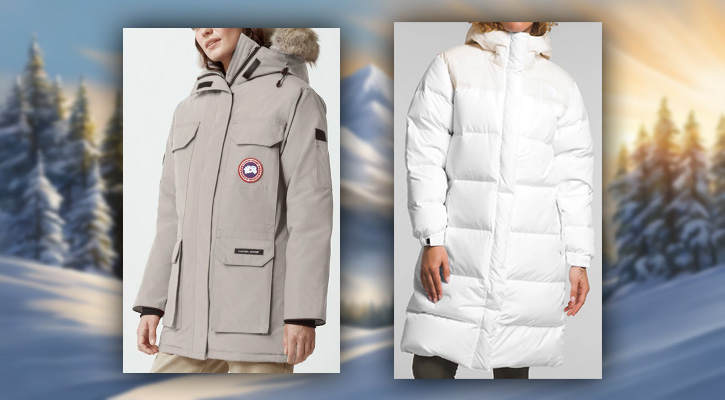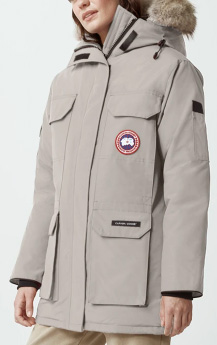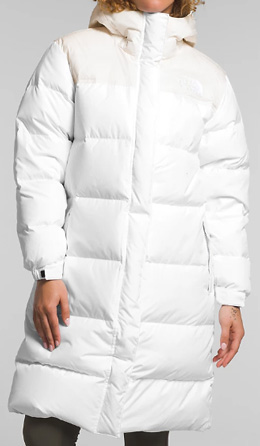
When you shop for winter outerwear, you may notice the high price tag on parkas and wonder why they cost so much.
Parkas are designed to withstand the harshest weather conditions, constructed with specialized materials for insulation, like down or advanced synthetics, and are often equipped with features such as waterproof outer shells and fur-lined hoods.
These materials and features contribute to the durability and functionality of the garment, which, in turn, increases the manufacturing costs.
But the necessity of such a high investment depends on your lifestyle and climate. If you live in a place with really cold winters or practice outdoor activities that expose you to extreme cold, a parka can offer the protection and warmth necessary to stay comfortable and safe.
In contrast, if you reside in a milder climate or spend little time outdoors in winter, you might not need the heavy-duty performance a parka provides, so a less costly alternative could be sufficient for your needs.
Let’s explore this type of jacket in more detail!
1. Why are Parkas so Expensive?
When considering a parka, you’re not just buying a coat, you’re investing in exceptional materials, design, and a brand’s reputation which all contribute to its higher price tag.
Premium Materials and Construction
Quality parkas offer superior warmth and durability due to their use of high-quality materials. Down insulation is a key factor, with high fill power indicating better warmth-to-weight ratios. Jackets featuring 800 to 900 fill power down provide excellent insulation while remaining lightweight.
Alternatives such as synthetic insulation or Downtek down are also utilized for their ability to retain heat even when wet.
Construction details matter. Taped seams, waterproof zippers, and Gore-Tex fabric enhance the jacket’s waterproof and windproof capabilities. These elements ensure that a parka can withstand harsh weather conditions, providing reliable protection.
- Materials Commonly Used:
- Natural Duck or Goose Down (700+ fill power)
- Synthetic fill (e.g., PrimaLoft®)
- Gore-Tex fabric
- DWR (Durable Water Repellent) coatings
- Construction Techniques:
- Taped seams for waterproofing
- Advanced stitching for durability
- Unique Features in Construction:
- Windproof barriers
- Breathable fabrics for breathability
Design and Functional Features
The design of a parka extends beyond aesthetics to incorporate functional features that provide comfort and convenience. With layers designed for insulation and hoods for additional warmth, these jackets are engineered to endure extreme conditions.
Functional features such as multiple pockets, adjustable waist and drawstrings, and water-repellent outer layers add to the utility and style of the jacket.
Parkas are often designed to reach down to the thigh or beyond, offering extra warmth and protection. Features like stretch materials ensure mobility, making them practical yet stylish.
- Functional Elements:
- Insulated layers
- Adjustable hoods and cuffs
- Ample pocket space
Brand Recognition and Marketing
Luxury brands like Moncler, Canada Goose, and The North Face have higher prices due to their established reputation for quality and performance. Brand recognition involves significant investment in marketing and craftsmanship sustainability, which influences the parka’s final cost.

Canada Goose Women’s Expedition Parka Heritage – costs around $1,700
image canadagoose.com
The price also reflects the branding, innovation, and heritage reflected in each jacket. Canada Goose coats are known for their durability and warmth, making them some of the warmest coats on the market. As a result, parkas from well-known brands come at a premium.
Brands Known for High-Quality Parkas:
Don’t miss: 10 Best Canadian Winter Jacket Brands: Our Favorites
2. Parkas’ Practical Value
When assessing the practical value of a parka, consider its performance in adverse weather conditions, versatile utility, durability as an investment, and the ethical implications of its materials.
Weather Resistance and Insulation
A parka distinguishes itself in extreme weather, offering superior weather resistance and insulation. The outer shell is typically waterproof and windproof, guarding against moisture and icy blasts of air.
High-quality parkas often incorporate materials that provide a robust barrier, while allowing your body to breathe, preventing overheating. Insulation is crucial, it’s frequently achieved with down or synthetic materials that trap air close to your body.
The effectiveness of a parka in cold climates, be it for urban use or in arctic expeditions, lies in its ability to maintain body heat efficiently.
- Weatherproofing: Waterproof and windproof capabilities.
- Insulation: Down or synthetic fillers to preserve warmth.
Utility and Versatility
Parkas are designed for versatility and utility, catering to various outdoor activities like hiking, skiing, or daily commuting. They come with a multitude of pockets and features that make them functional beyond just warmth.
Many are packable, allowing for easy transport, which is particularly useful for activities like camping or alpine expeditions. Parkas can be suitable for a range of temperatures and conditions, making them a flexible choice for both urban environments and the wilderness.
Longevity as an Investment
Considering its durability and quality, a parka can serve as a long-term investment. High-quality parkas are designed to be durable, often lasting many winters with proper care.
The initial high cost reflects not only the materials but also the construction that promises longevity. This means you may save money over time by reducing the need to purchase new coats every few seasons.
- Investment: High upfront cost justified by extended durability and the avoidance of frequent replacements.

The North Face Women’s Nuptse Parka – costs around $400
image thenorthface.com
Ethical Practices and Sustainability
The production of parkas raises important ethical and sustainable considerations. Look for RDS-certified (Responsible Down Standard) to ensure that the down used is ethically sourced.
Some parkas also use coyote fur around the hood, which has sparked ethical debates: consider synthetic alternatives if this is a concern for you.
Manufacturers are increasingly incorporating sustainable practices, so supporting these initiatives can reflect your commitment to sustainability and ethical responsibility.
- Ethical Sourcing: RDS-certification and alternatives to coyote fur.
- Sustainability: Support for sustainable production practices.
3. Alternatives, Price Comparisons: Do You Really Need a Parka?
When considering the purchase of a parka, it’s crucial to explore how it stacks up against other winter wear and evaluate more affordable alternatives. Making the right decision for you requires understanding the difference in cost and functionality.
Comparing with Other Winter Wear
A parka is often distinguished by its thigh-length cut, a hood lined or trimmed with fur, and robust synthetic or down insulation designed for extreme cold.
Contrastingly, other winter wear like jackets and winter coats may offer varying degrees of warmth without some of the parka’s signature features. Here is how some popular types compare price-wise:
| Winter Wear | Average Price | Warmth |
|---|---|---|
| Down Jacket | $150 – $500 | High |
| Winter Coat | $100 – $400 | Moderate |
| Parkas | $200 – $1000 | Very High |
Parkas, sought after for being among the most stylish and warmer options, justify their higher price through functionality and often, durability, making them a solid investment for those in colder climates.
Evaluating Cheaper Alternatives
Assessing less expensive options is critical if you question the necessity of a parka for your winter needs. For milder climates or less frequent exposure to the cold, consider these alternatives, which balance cost and warmth:
- Fleece Jackets: Effective for light chill, not suitable for harsh weather.
- Insulated Vests: Adds core warmth, lacks sleeve protection.
- Lightweight Synthetic Jackets: Less warm but more affordable, with some water resistance.
Considerations before Buying
When shopping for a winter parka, here’s what to reflect on:
- Purpose: Are you encountering sub-zero temperatures or just looking to stay warm during a brisk walk?
- Investment: Will you benefit from a more expensive parka over several years, or is a cheaper alternative sufficient for your lifestyle?
- Features: Does the added warmth of a parka, possible bulkiness, or features like fur-lined hoods align with your necessity for comfort and style?
Remember, your chosen winter jacket should align with your specific climate and lifestyle needs, whether it’s a high-end parka or a more cost-efficient option.
Read next: 9 Japanese Winter Coat and Down Jacket Brands that You’ll Love
